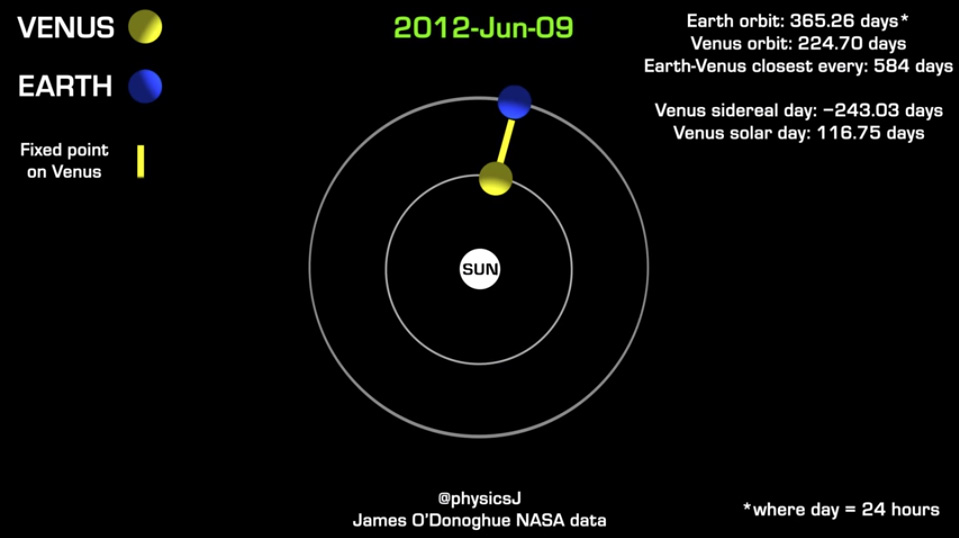Although it has been known for about 50 years, I had never heard it until this was on APOD a few days ago (https://apod.nasa.gov/apod/ap200603.html). Venus is a rocky planet, like Earth, but is covered by thick clouds that obscure all details of the planet’s surface. But using radio telescopes, astronomers were able to “see” some details, which pretty soon led to an amazing discovery: Venus always shows us the same side. More specifically, Venus’ orbit and rotation are synchronized with Earth such that every time Venus is at “inferior conjunction” (when it is closest to us), the same side of Venus is facing us. Since this appears to be very consistent, it is very likely not a coincidence, but the result of gravitational effects, just as our Moon is tidally locked to Earth’s rotation. The video on APOD shows the effect more clearly.
A lot of people have grown more interested in Venus in recent years. One reason for this is that Venus is actually very similar to Earth, except that it lost nearly all its water eons ago. We can tell that it used to have abundant water because of specific remnants in its atmosphere. What happened to Venus is runaway greenhouse warming that evaporated all its water. Venus is now the hottest of all the planets in our solar system (at 870 degrees F), even though Mercury is closer to the Sun. Although things generally happen quite slowly in planetary science, every indication is that Earth is now warming up at an alarming rate, and even relatively small changes can have devastating effects, as we are now seeing in our changing weather patterns. If you would like to learn more about how planets evolve (and “die”), I highly recommend David Grinspoon’s book, “Earth in Human Hands”. I don’t do as much reading as I’d like because of vision problems, but I read all 506 pages of this book almost non-stop. It is both informative and entertaining.
Another astronomy-related piece was in the news lately, but one that I did not much appreciate; a report on which other planet is closest to Earth. We all know that it’s Venus, by any reasonable definition. However, it is apparently true that because of Mercury’s more elliptical orbit, when it is at its closet to Earth it is actually closer than Venus ever is. But that doesn’t change the facts that Mercury’s average distance from Earth is much greater than that of Venus. Similarly, Mercury’s average distance from the Sun is much less than that of Venus. This is how we define the order of the planets in distance from the Sun. So the article was basically astro-sensationalism, making a rather wild claim that is only true under very odd/non-standard perspectives.
